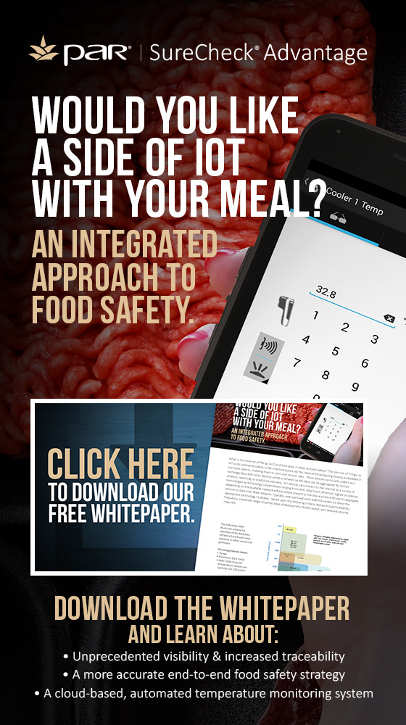 They are everywhere, taking reliable measurements on a rigorous schedule in storage facilities, shipping containers and retail refrigerator units across the globe. From multiple temperatures at pinpoint times during transportation, to appliance maintenance of freezers at the supermarket, massive amounts of data are collected and automatically sent off to a central cloud database.
They are everywhere, taking reliable measurements on a rigorous schedule in storage facilities, shipping containers and retail refrigerator units across the globe. From multiple temperatures at pinpoint times during transportation, to appliance maintenance of freezers at the supermarket, massive amounts of data are collected and automatically sent off to a central cloud database.
For the amount of information gathered, the man power to make it all happen should be staggering, yet none of this data grunt work is done by a single person. How is this possible?
 Through the so-called Internet of Things.
Through the so-called Internet of Things.
To put it simply, Internet of Things, aka, IoT, is the connection of one computing device to the internet, which may interconnect to another computing device and exchange information. For the average Joe consumer, this means turning a car on with the tap of a cell phone or receiving an alert when their washing machine rocks out of balance while they’re out of the house.
For the food industry, IoT means an efficient way to track food safety data points with things like real-time temperature tracking throughout the entire harvest to grocery checkout process, storing information in a central location for analysis.
Elliott Grant, founder of Harvest Mark — a leading traceability company in the food industry — says IoT is made up of three things:
- Unique identity
- Sensors
- Ability to communicate
“The connection of the internet has gotten so low cost that you can put sensors in things and places that were previously not possible,” Grant says. “The real magic is when the sensors start to communicate clearly and the data from each sensor can be integrated across the supply chain.”
The caveats, he says, are two-fold when it comes to IOT. For one, food companies have the ability to closely collect and track essential food safety measurements to take Hazard Analysis and Critical Control Points efficiently, which can also be used to monitor quality by integrating data from multiple devices in the food chain.
“Imagine an inspection that happens at a retail store with a handheld device measuring freshness. You then correlate the readings from that device all the way back to the supply chain with the time temperatures taken from the trucks, with the measurement that might have been taken on the farm and perhaps a measurement taken during the growing season,” Grant says, adding that the integration of data points could lead to predicting any issues.
“I think that’s the specific reason for IoT. It is not necessarily responding to an event, but predicting and anticipating events in the future.”
The biggest caveat, he says, is the ability to get a return on investment for the technology. According to Grant, this is where food companies stand to gain the most, however, where they must crack down the hardest to see if IoT is right for them. His recommendation is for food companies to walk through the system manually to collect measurements to understand what can be gained, and whether that improvement would be beneficial on a large scale automatic system.
“Having more data doesn’t necessarily give you more insight. So my recommendation is to identify what are the key drivers of risk and opportunity that could potentially be improved with more measurements,” Grant says.
“Before going out and building an infrastructure, go out and take a thousand measurements by hand to see whether or not you get any benefit from that (data). Forget the cost of doing it by hand. But does the data actually give you anything? Only then, when you have some insight from a small sample, then you can go ahead and say ‘let’s spend some money and do this thing at scale.’ ”
(To sign up for a free subscription to Food Safety News, click here.)
